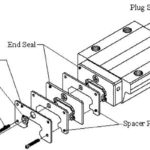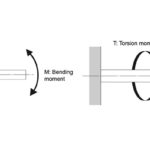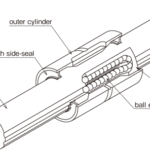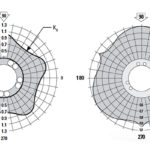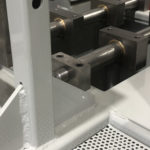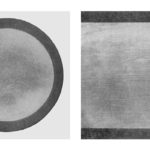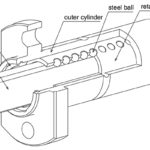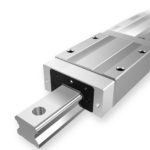Suffice it to say, pretty much everything about 2020 has been out of the ordinary, and our recap of the top linear motion articles for this year is no exception. For the first time in recent history, only one (1!) of the top 10 articles is about ball or lead screw technologies — a topic that usually […]
Slides + guides (all)
Linear bearing seals: Types, options, and applications
Seals for recirculating linear bearings serve two functions — keeping contamination out and keeping lubrication in — to ensure the system operates properly without premature wear or failure. Because sealing is so critical to linear bearing systems, manufacturers offer a variety of sealing designs and materials to meet a wide range of applications and environments. […]
How to size a spline shaft: Shaft strength in bending and torsion
Choosing a shaft for a traditional linear ball bushing is relatively easy — choose the appropriate diameter, material, and hardness, check the dimensional accuracies and tolerances, and if the shaft is unsupported, perform a beam deflection calculation. But because spline shafts can withstand both radial and torque loads, it’s important to ensure the shaft strength […]
How to calculate bearing life for a ball spline
A ball spline is much like a linear ball bushing and shaft, but with axial grooves along the outer diameter of the shaft and the inner diameter of the nut. These grooves prevent rotation of the bearing (referred to as a spline nut) and allow the ball spline to transmit torque. Because a ball […]
Linear guide handles higher loads, misalignment
Rollon has introduced its Compact Rail Plus — part of its new generation of high-performance linear guides. This rugged unit features a new design to handle higher loads while maintaining the Compact Rail product family’s self-aligning capabilities. Compact Rail Plus is designed for demanding applications such as those involving higher loads, high speeds, fast accelerations […]
How to calculate linear ball bushing life (and how it differs from other life calculations)
The standard life calculation for linear ball bearings is widely known as: L = bearing life (m) C = rated dynamic load (N) F = applied dynamic load (N) But linear ball bushings often experience operating conditions that aren’t accounted for in the general bearing life equation. To account for these adverse conditions, the life calculation […]
Round-rail linear guide or profile-rail linear guide?
In this article, we outline how to choose a linear guide for your application and environment. By Lindsey Brimage and Eric Schultz | Thomson Industries Ian Miller | Motion Industries Canada Designers of linear motion systems often find themselves weighing the pros and cons of round versus profile (also known as square) linear guides. Many […]
How does shaft hardness affect the life of a linear ball bushing?
A linear ball bushing riding on a round shaft is often compared to a radial ball bearing, with the bushing acting as the outer race of the bearing and the shaft acting as the inner race. But in linear bushing assemblies, the surfaces of both the ball and the shaft are spherical, so contact between […]
What are stroke ball splines and how do they differ from standard ball splines?
Standard ball splines use balls that recirculate within a nut, or housing, similar to that of a recirculating ball linear bushing. But the mechanisms and geometry required for ball recirculation result in a spline nut that is relatively large in diameter compared to the diameter of the spline shaft. For a more compact assembly, several […]
THK debuts fast LM guide with speeds to 15 m/sec
With speeds reaching 15m/sec, THK’s Type FHS is said to be the fastest LM guide available on the market today. The performance of the Type FHS makes it suitable for applications requiring the fastest motion, including robot transfer devices and laser cutters. The Type FHS can be installed in horizontal, vertical, inverted, and wall-mounted orientations. […]


